 From Moneyball author Michael Lewis' latest New York Times piece on Shane Battier, "The No-Stats All-Star."
From Moneyball author Michael Lewis' latest New York Times piece on Shane Battier, "The No-Stats All-Star."
Having watched Battier play for the past two and a half years, Morey has come to think of him as an exception: the most abnormally unselfish basketball player he has ever seen. Or rather, the player who seems one step ahead of the analysts, helping the team in all sorts of subtle, hard-to-measure ways that appear to violate his own personal interests. “Our last coach dragged him into a meeting and told him he needed to shoot more,” Morey says. “I’m not sure that that ever happened.” Last season when the Rockets played the San Antonio Spurs Battier was assigned to guard their most dangerous scorer, Manu Ginóbili. Ginóbili comes off the bench, however, and his minutes are not in sync with the minutes of a starter like Battier. Battier privately went to Coach Rick Adelman and told him to bench him and bring him in when Ginóbili entered the game. “No one in the N.B.A. does that,” Morey says. “No one says put me on the bench so I can guard their best scorer all the time.”
One well-known statistic the Rockets’ front office pays attention to is plus-minus, which simply measures what happens to the score when any given player is on the court. In its crude form, plus-minus is hardly perfect: a player who finds himself on the same team with the world’s four best basketball players, and who plays only when they do, will have a plus-minus that looks pretty good, even if it says little about his play. Morey says that he and his staff can adjust for these potential distortions — though he is coy about how they do it — and render plus-minus a useful measure of a player’s effect on a basketball game. A good player might be a plus 3 — that is, his team averages 3 points more per game than its opponent when he is on the floor. In his best season, the superstar point guard Steve Nash was a plus 14.5. At the time of the Lakers game, Battier was a plus 10, which put him in the company of Dwight Howard and Kevin Garnett, both perennial All-Stars. For his career he’s a plus 6. “Plus 6 is enormous,” Morey says. “It’s the difference between 41 wins and 60 wins.” He names a few other players who were a plus 6 last season: Vince Carter, Carmelo Anthony, Tracy McGrady.
. . .Before the Rockets traded for Battier, the front-office analysts obviously studied his value. They knew all sorts of details about his efficiency and his ability to reduce the efficiency of his opponents. They knew, for example, that stars guarded by Battier suddenly lose their shooting touch. What they didn’t know was why. Morey recognized Battier’s effects, but he didn’t know how he achieved them. Two hundred or so basketball games later, he’s the world’s expert on the subject — which he was studying all over again tonight. He pointed out how, instead of grabbing uncertainly for a rebound, for instance, Battier would tip the ball more certainly to a teammate. Guarding a lesser rebounder, Battier would, when the ball was in the air, leave his own man and block out the other team’s best rebounder. “Watch him,” a Houston front-office analyst told me before the game. “When the shot goes up, he’ll go sit on Gasol’s knee.” (Pau Gasol often plays center for the Lakers.) On defense, it was as if Battier had set out to maximize the misery Bryant experiences shooting a basketball, without having his presence recorded in any box score. He blocked the ball when Bryant was taking it from his waist to his chin, for instance, rather than when it was far higher and Bryant was in the act of shooting. “When you watch him,” Morey says, “you see that his whole thing is to stay in front of guys and try to block the player’s vision when he shoots. We didn’t even notice what he was doing until he got here. I wish we could say we did, but we didn’t.”
People often say that Kobe Bryant has no weaknesses to his game, but that’s not really true. Before the game, Battier was given his special package of information. “He’s the only player we give it to,” Morey says. “We can give him this fire hose of data and let him sift. Most players are like golfers. You don’t want them swinging while they’re thinking.” The data essentially broke down the floor into many discrete zones and calculated the odds of Bryant making shots from different places on the court, under different degrees of defensive pressure, in different relationships to other players — how well he scored off screens, off pick-and-rolls, off catch-and-shoots and so on. Battier learns a lot from studying the data on the superstars he is usually assigned to guard. For instance, the numbers show him that Allen Iverson is one of the most efficient scorers in the N.B.A. when he goes to his right; when he goes to his left he kills his team. The Golden State Warriors forward Stephen Jackson is an even stranger case. “Steve Jackson,” Battier says, “is statistically better going to his right, but he loves to go to his left — and goes to his left almost twice as often.” The San Antonio Spurs’ Manu Ginóbili is a statistical freak: he has no imbalance whatsoever in his game — there is no one way to play him that is better than another. He is equally efficient both off the dribble and off the pass, going left and right and from any spot on the floor.Bryant isn’t like that. He is better at pretty much everything than everyone else, but there are places on the court, and starting points for his shot, that render him less likely to help his team. When he drives to the basket, he is exactly as likely to go to his left as to his right, but when he goes to his left, he is less effective. When he shoots directly after receiving a pass, he is more efficient than when he shoots after dribbling. He’s deadly if he gets into the lane and also if he gets to the baseline; between the two, less so. “The absolute worst thing to do,” Battier says, “is to foul him.” It isn’t that Bryant is an especially good free-throw shooter but that, as Morey puts it, “the foul is the worst result of a defensive play.” One way the Rockets can see which teams think about the game as they do is by identifying those that “try dramatically not to foul.” The ideal outcome, from the Rockets’ statistical point of view, is for Bryant to dribble left and pull up for an 18-foot jump shot; force that to happen often enough and you have to be satisfied with your night. “If he has 40 points on 40 shots, I can live with that,” Battier says. “My job is not to keep him from scoring points but to make him as inefficient as possible.” The court doesn’t have little squares all over it to tell him what percentage Bryant is likely to shoot from any given spot, but it might as well.
The reason the Rockets insist that Battier guard Bryant is his gift for encouraging him into his zones of lowest efficiency. The effect of doing this is astonishing: Bryant doesn’t merely help his team less when Battier guards him than when someone else does. When Bryant is in the game and Battier is on him, the Lakers’ offense is worse than if the N.B.A.’s best player had taken the night off. “The Lakers’ offense should obviously be better with Kobe in,” Morey says. “But if Shane is on him, it isn’t.” A player whom Morey describes as “a marginal N.B.A. athlete” not only guards one of the greatest — and smartest — offensive threats ever to play the game. He renders him a detriment to his team.
Tags: Michael Lewis, Shane Battier, The No-Stats All-Star, New Journalism




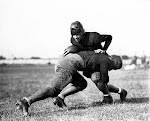
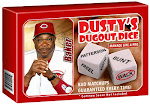
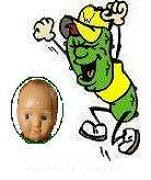





.jpg)


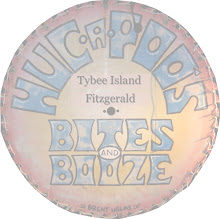
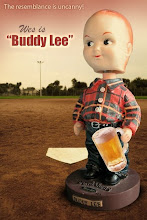
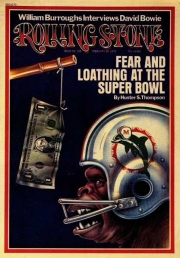

No comments:
Post a Comment